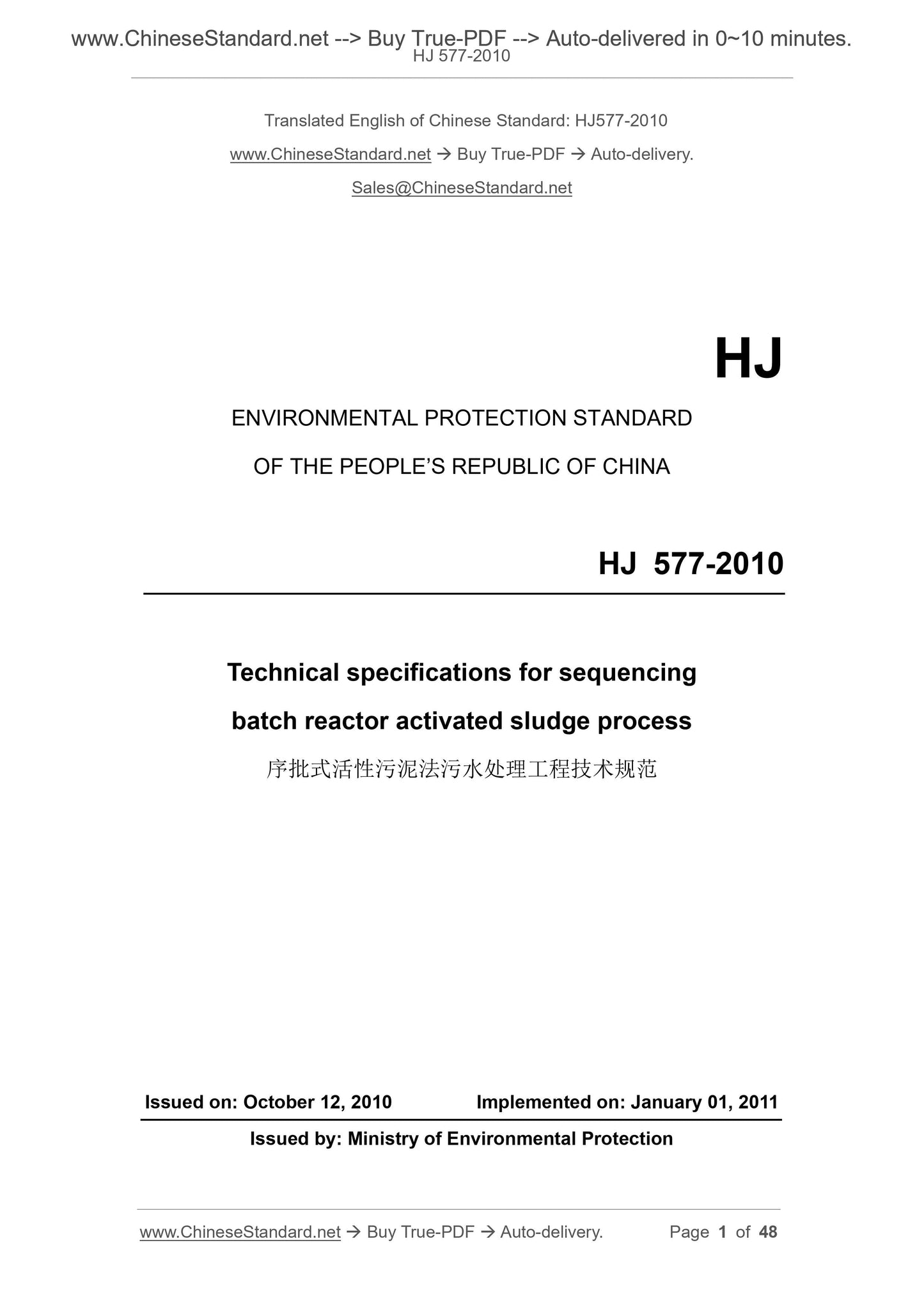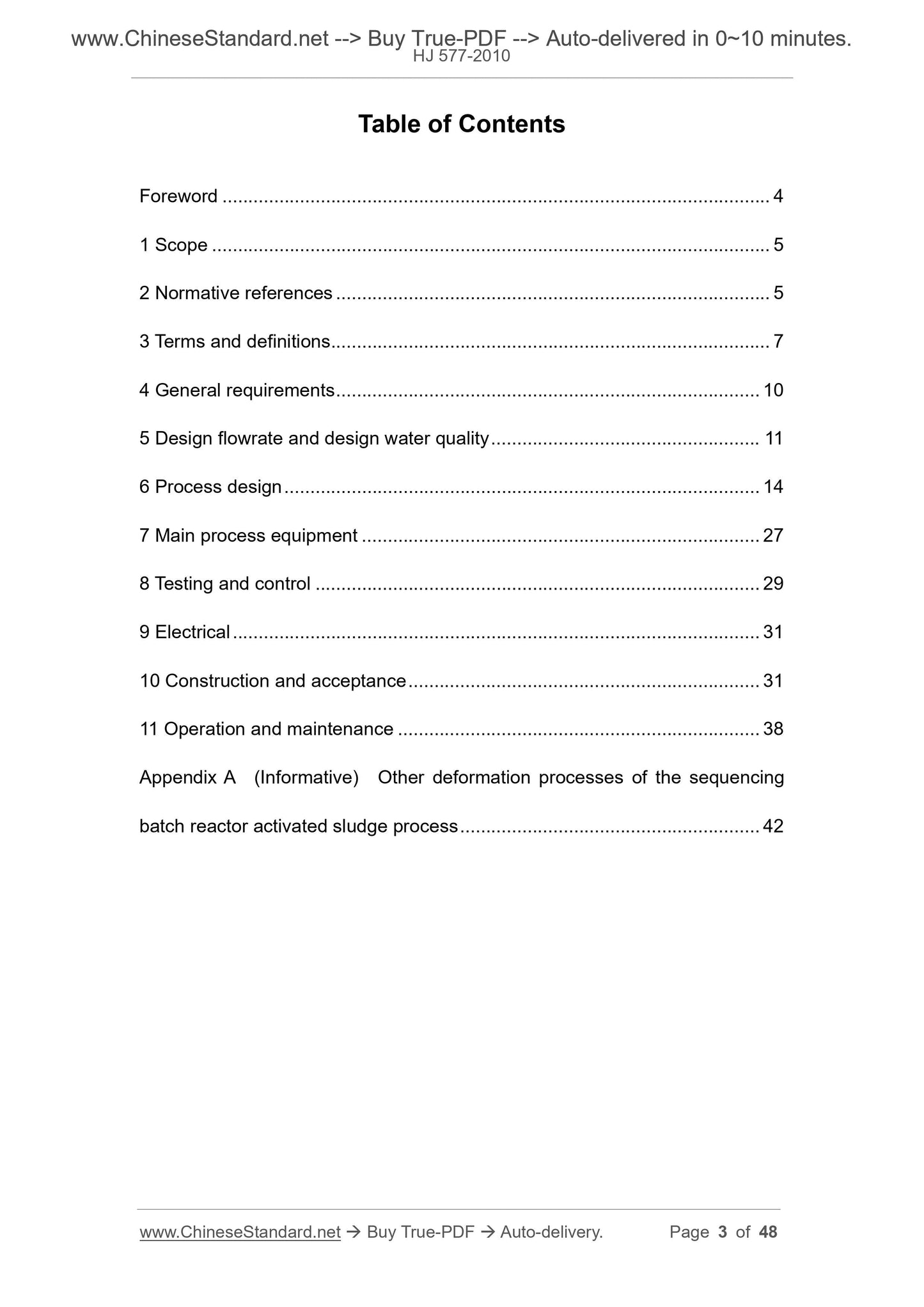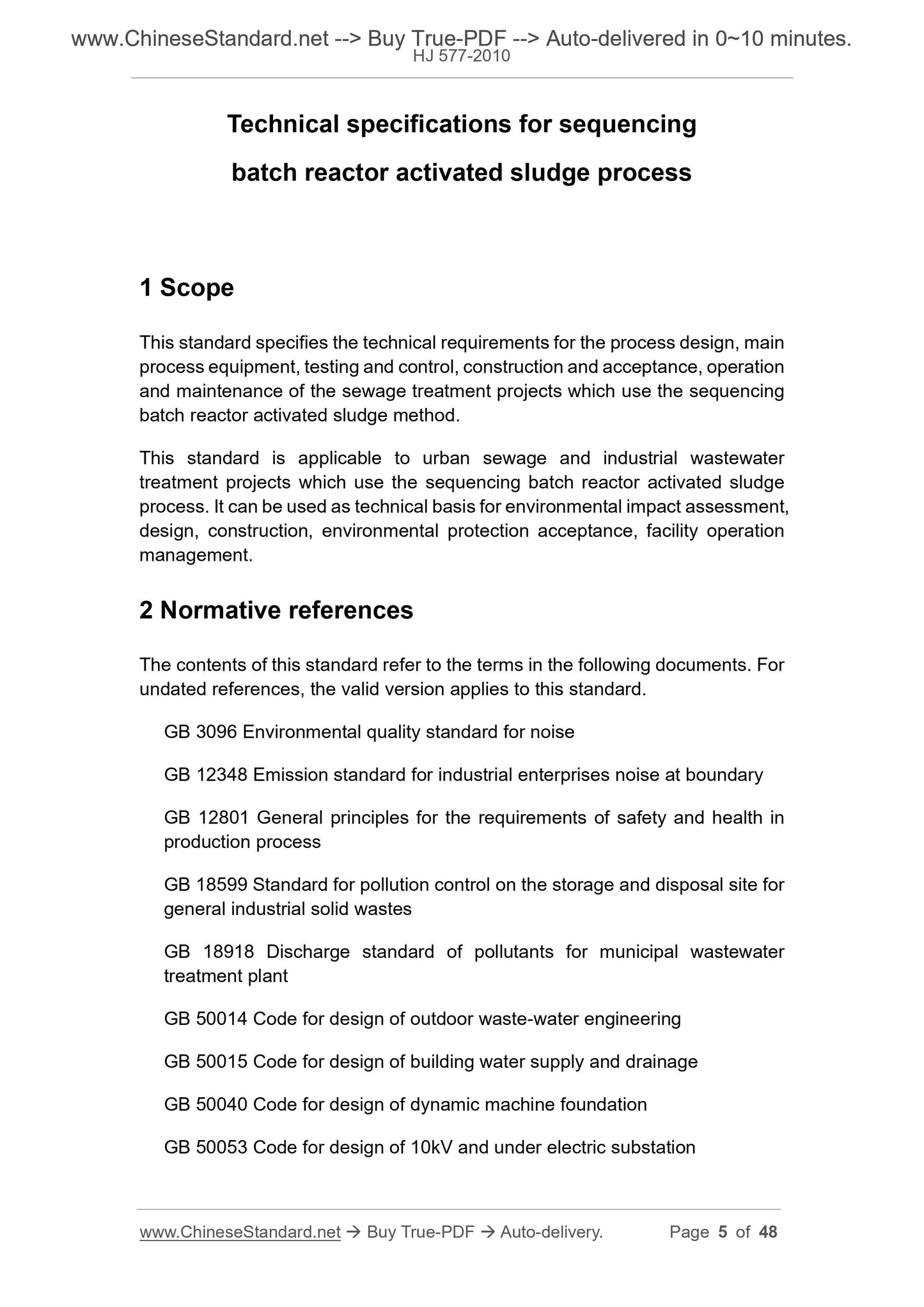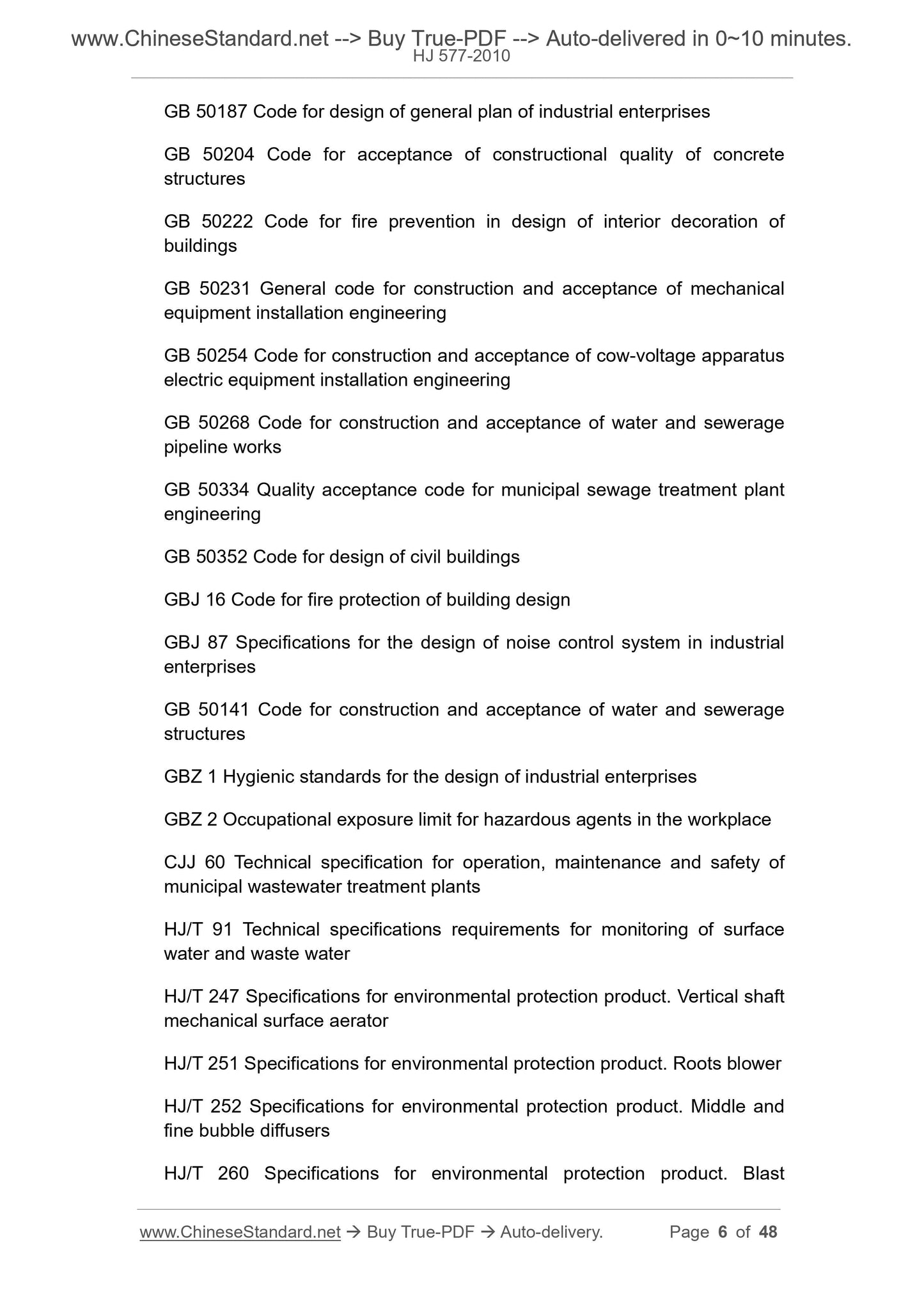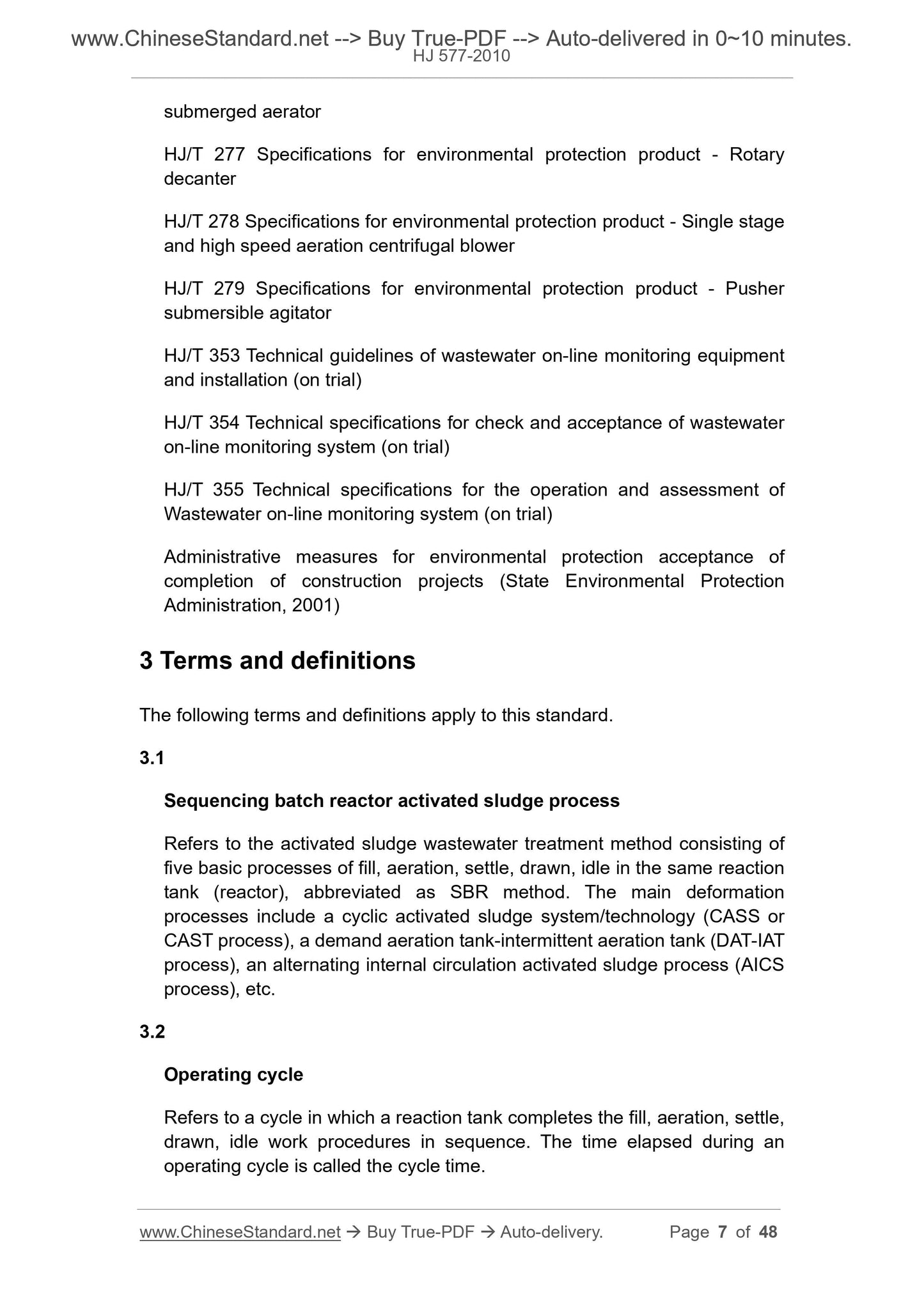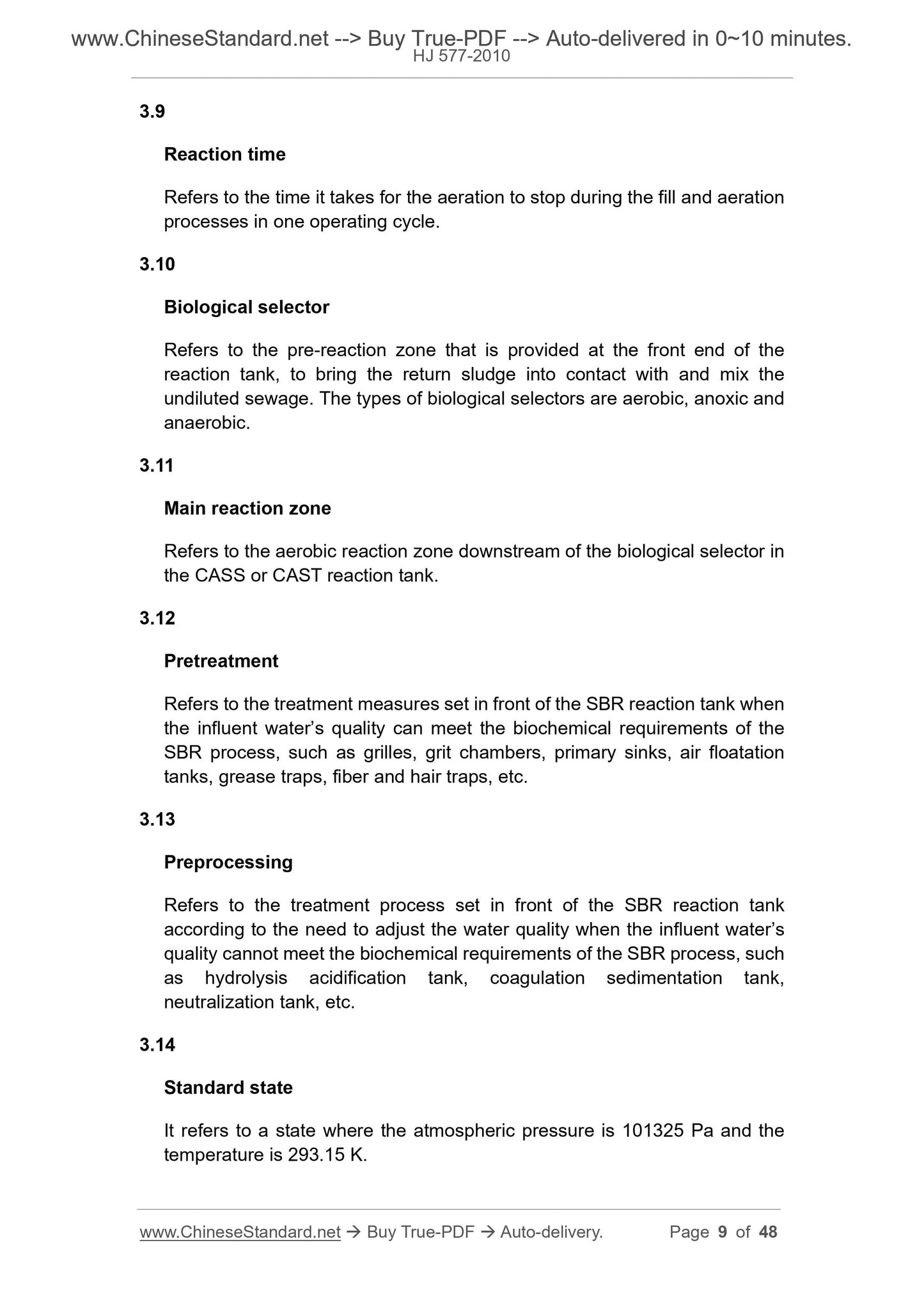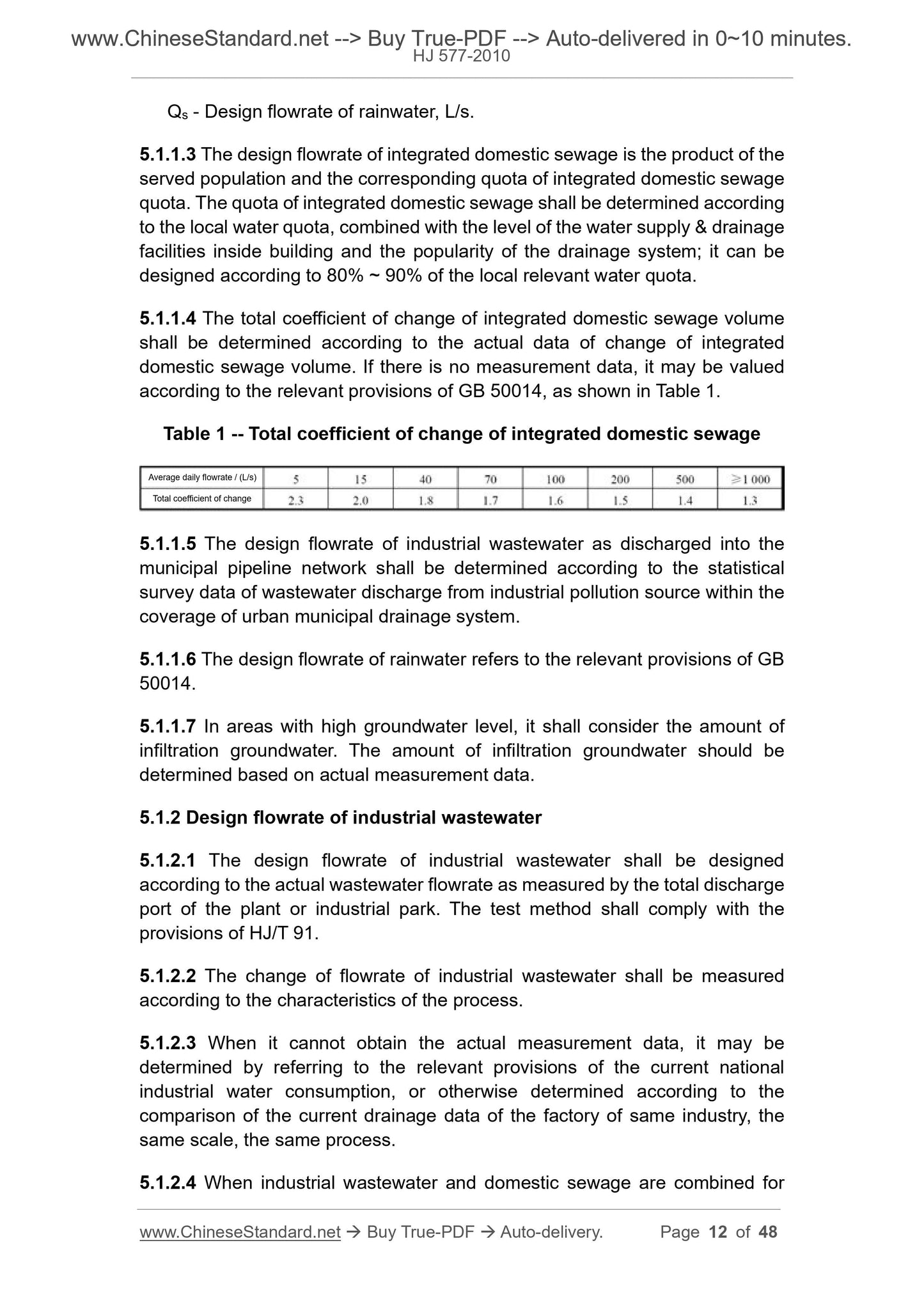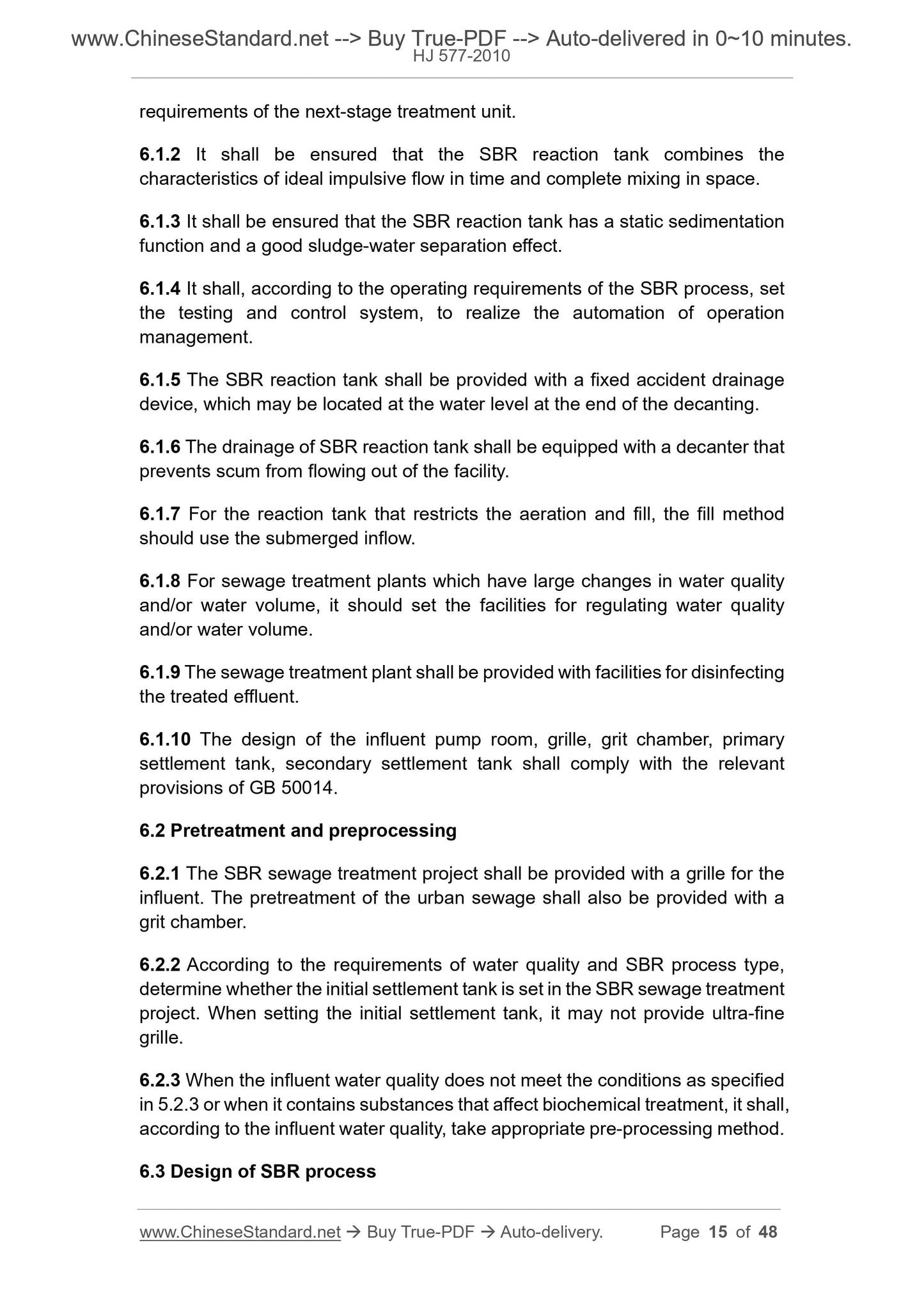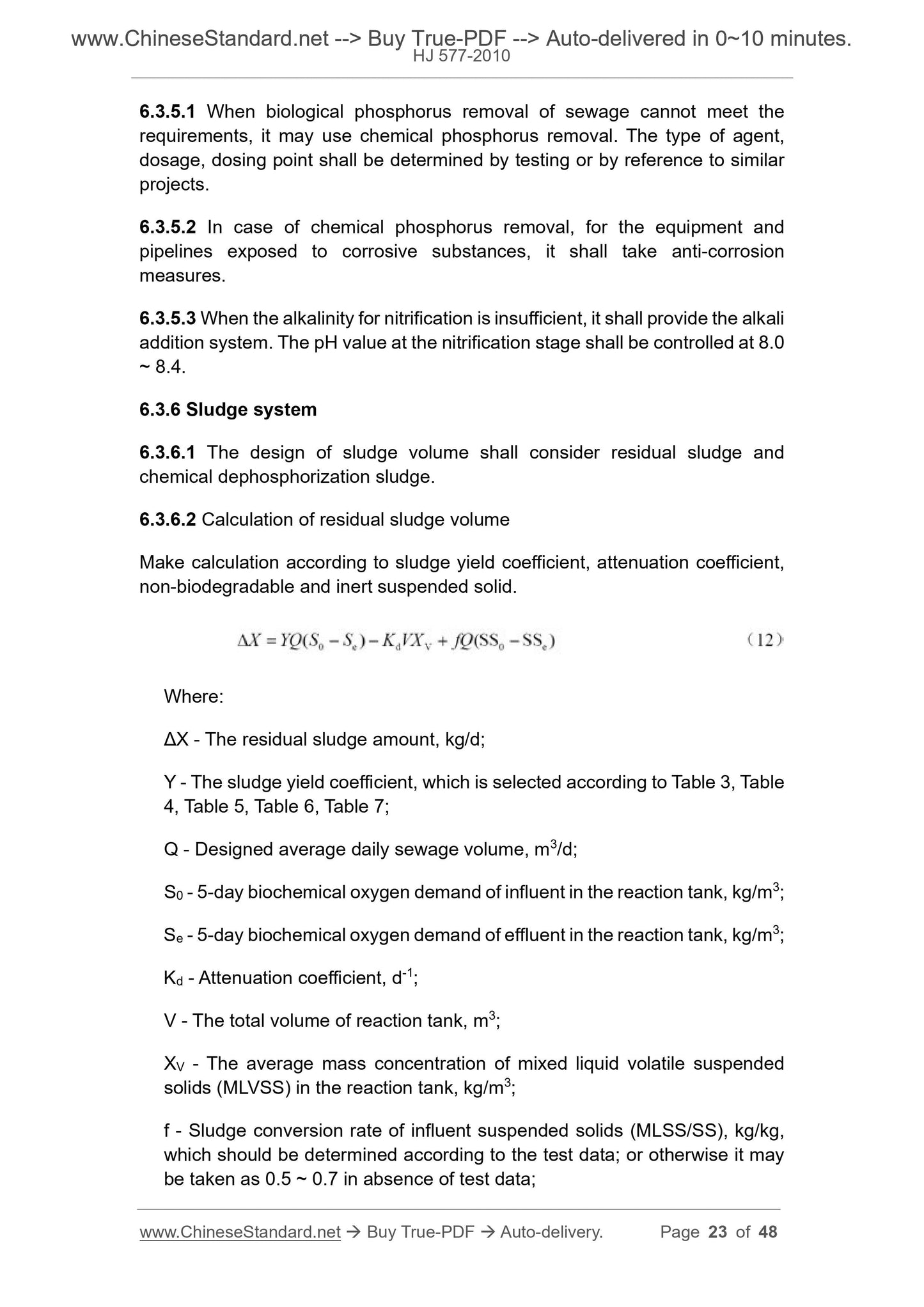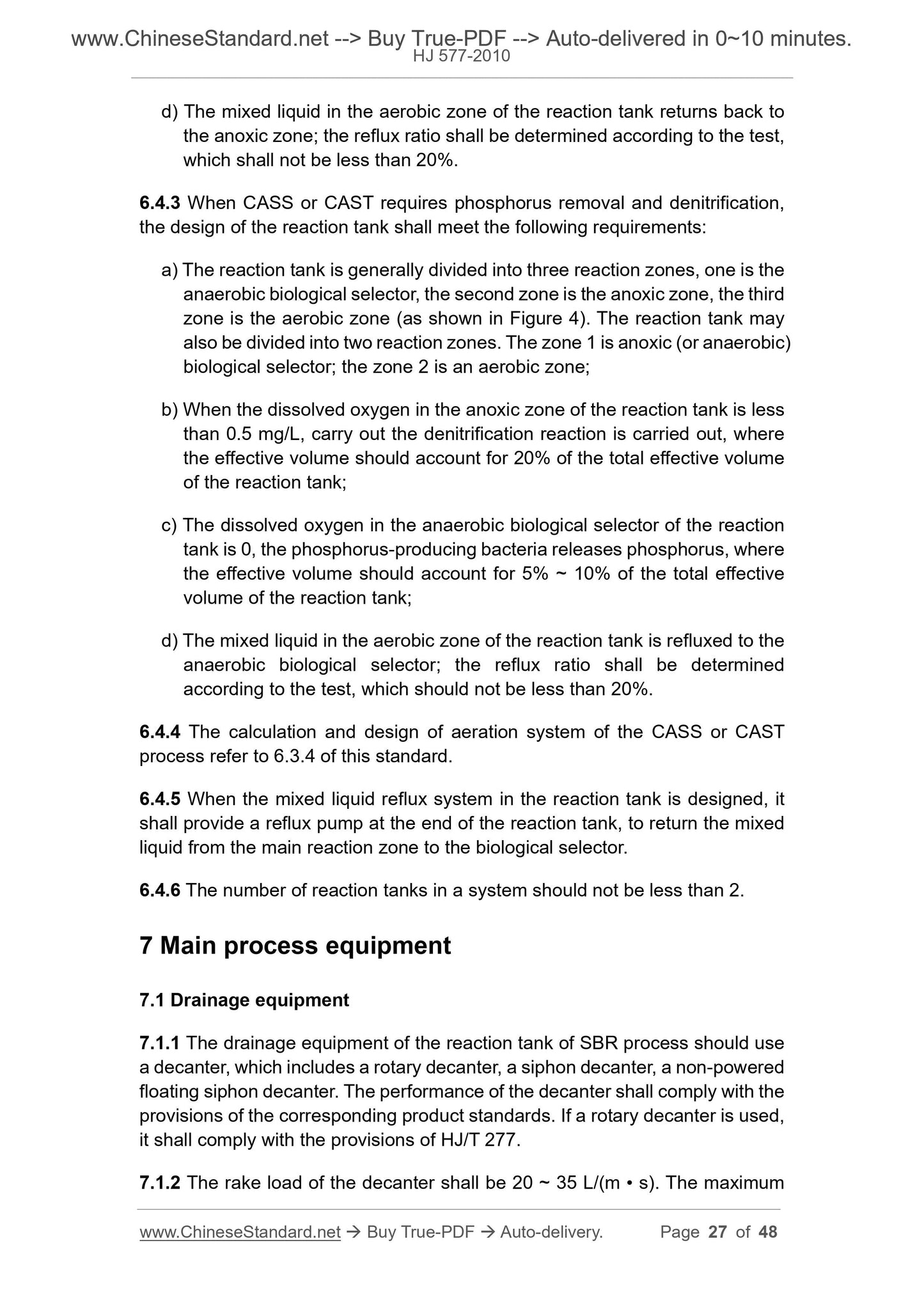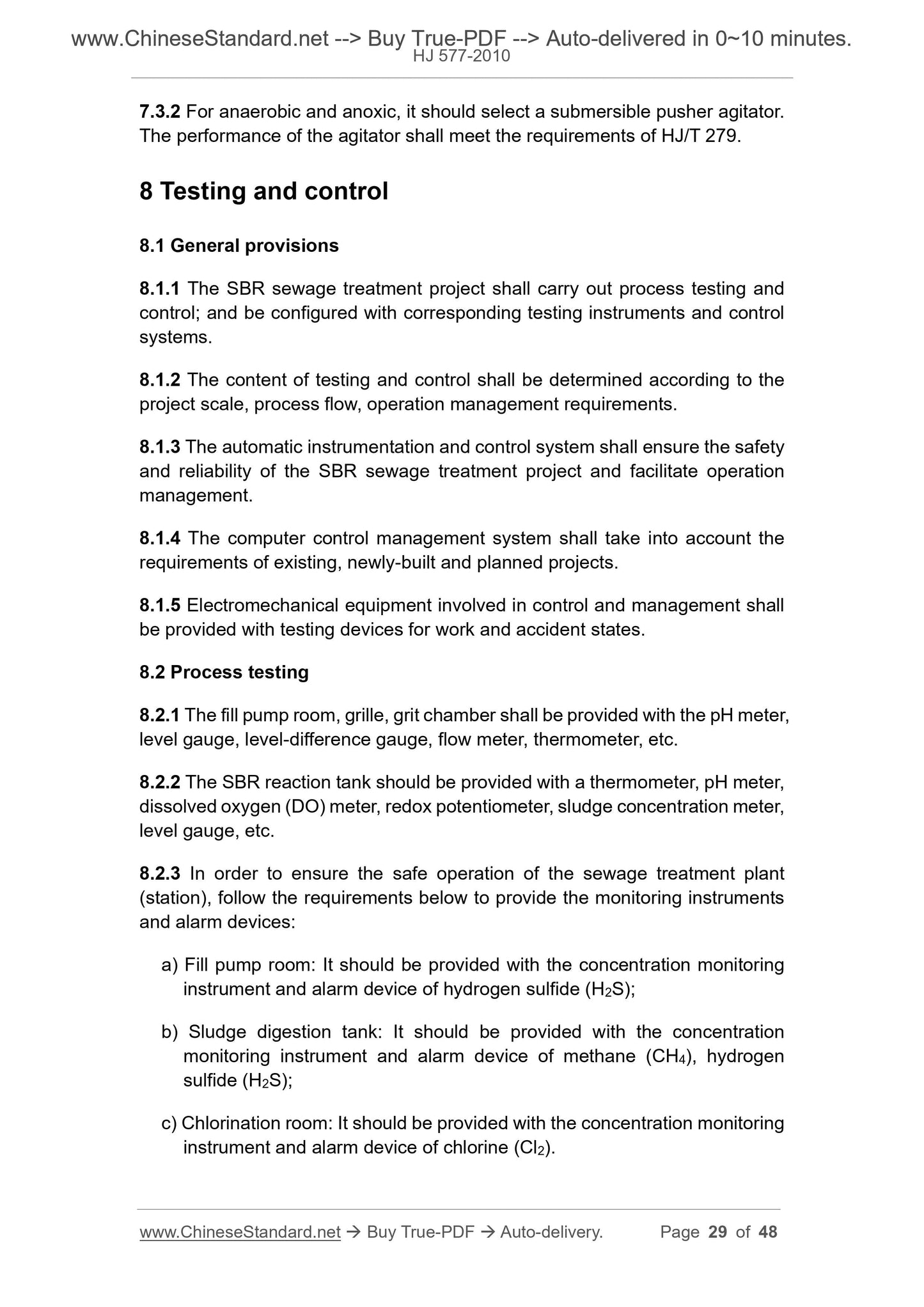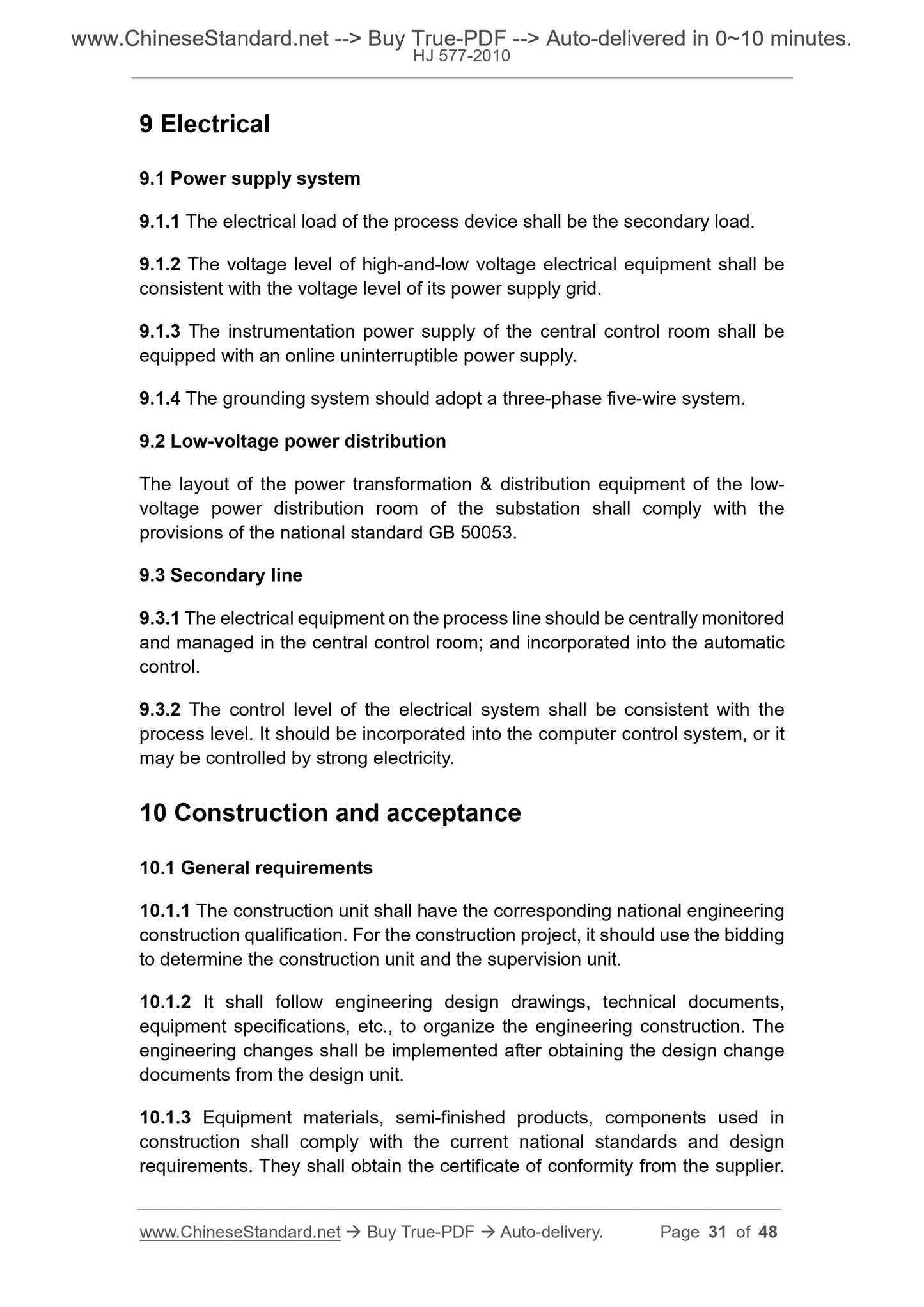1
/
of
12
www.ChineseStandard.us -- Field Test Asia Pte. Ltd.
HJ 577-2010 English PDF
HJ 577-2010 English PDF
Regular price
$365.00
Regular price
Sale price
$365.00
Unit price
/
per
Shipping calculated at checkout.
Couldn't load pickup availability
HJ 577-2010: Technical specifications for sequencing batch reactor activated sludge process
Delivery: 9 seconds. Download (and Email) true-PDF + Invoice.Get Quotation: Click HJ 577-2010 (Self-service in 1-minute)
Newer / historical versions: HJ 577-2010
Preview True-PDF
Scope
This standard specifies the technical requirements for the process design, mainprocess equipment, testing and control, construction and acceptance, operation
and maintenance of the sewage treatment projects which use the sequencing
batch reactor activated sludge method.
This standard is applicable to urban sewage and industrial wastewater
treatment projects which use the sequencing batch reactor activated sludge
process. It can be used as technical basis for environmental impact assessment,
design, construction, environmental protection acceptance, facility operation
management.
Basic Data
| Standard ID | HJ 577-2010 (HJ577-2010) |
| Description (Translated English) | Technical specifications for sequencing batch reactor activated sludge process |
| Sector / Industry | Environmental Protection Industry Standard |
| Classification of Chinese Standard | Z23 |
| Word Count Estimation | 30,368 |
| Date of Issue | 2010-10-12 |
| Date of Implementation | 2011-01-01 |
| Quoted Standard | GB 3096; GB 12348; GB 12801; GB 18599; GB 18918; GB 50014; GB 50015; GB 50053; GB 50187; GB 50204; GB 50222; GB 50231; GB 50254; GB 50268; GB 50334; GB 50352; GBJ 16; GBJ 87; GB 50141; GBZ 1; GBZ 2; CJJ 60; HJ/T 91; HJ/T 247; HJ/T 251; HJ/T 252; HJ/T 260; HJ/T 277; HJ/T 278; HJ/T 279; HJ/T 353; HJ/T 354; HJ/T 355; GB 50040 |
| Regulation (derived from) | Department of Environmental Protection Notice No. 73 of 2010 |
| Issuing agency(ies) | Ministry of Ecology and Environment |
| Summary | This standard specifies the use of sequencing batch activated sludge wastewater treatment process design engineering, the main process equipment, detection and control, construction and acceptance, operation and maintenance of the technical requirements. This standard applies to using sequencing batch activated sludge of sewage and industrial wastewater treatment works, can be used as environmental impact assessment, design, construction, operation and management of environmental acceptance and facilities technical basis. |
Share
